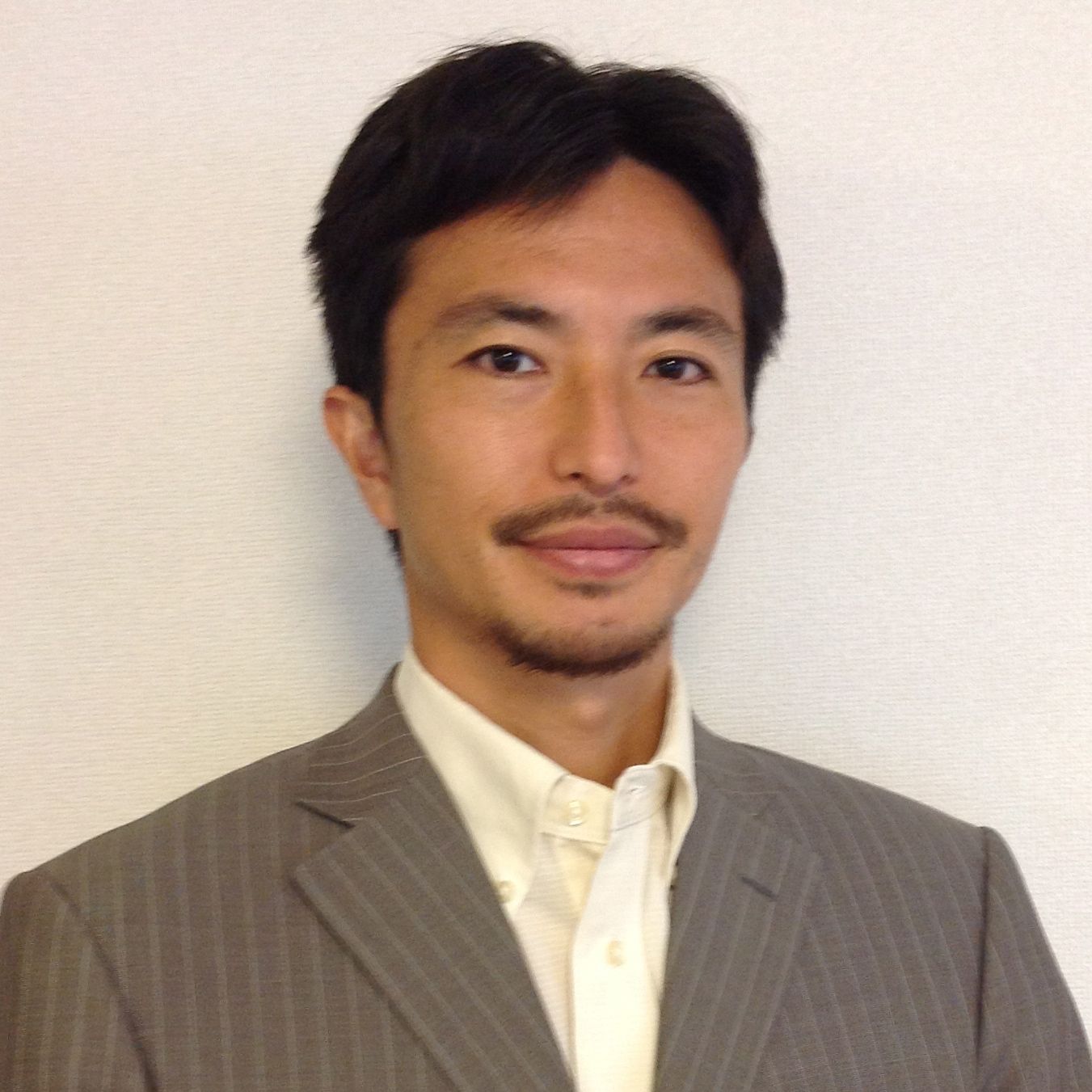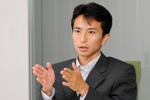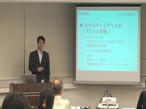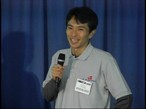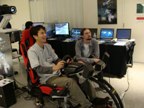Space travel business: An eccentric innovation
Hello. This is Irino, a strategy consultant.
Today, I will write about space travel business.
There are two types of space travel.
One is a type called Orbital (orbital aviation).
You get on the orbit 400 km up in the air and stay about a week in the international space station together with astronauts from NASA or Russia. The cost is about 2 billion yen. You can apply from JTB and 6 civilians already have gone on this trip. There are even some repeaters.
The other type of space travel is called suborbital (suborbital flight).
On this trip, you climb out to the altitude of 100km on a airplane-form spacecraft and enjoy zero-gravity for 5 minutes, then return to the earth. It’s like a bullet tour of 90 minutes like being on a roller coaster. Altitude of 100km or higher is defined as the outer space, so you can claim that “you’ve been there” and you can see dark outer space above your head and round blue earth underneath. The cost is about 20 million yen.
Virgin Galactic has started marketing it. It is scheduled to be in service staring in the second half of 2013, but there are already 600 applicants.
The time when you had to be astronauts for NASA or JAXA in order to space travel is ending and it’s starting to be handled by civilian enterprises.
What triggered space development by private companies was a prize money race called Ansari X Prize. A prize of 1 billion yen was to be granted to the first team that succeeded with suborbital flights above the altitude of 100 km twice within two weeks. Lindberg’s transatlantic flight was also a prize money race, but this is the space equivalent of it.
Over 20 company teams from all over the world participated with various ideas and technologies like sink a spacecraft deep in the ocean and use the ascending force to send it up in the air and so forth. At first, nobody was expected win the prize, but a venture company called Scaled Composites, who had less than 50 employees, got 3 billion yen as funds from Microsoft’s founder, Paul Gardner Allen, and succeeded with the first civilian space travel in October of 2004. They achieved it with a system of using a mother vessel and a child vessel. They flew up from the land using the mother vessel which was like a transport plane and at 15km up in the air, they undocked the child vessel and air-launched it. The child vessel surged up to 100 km up in the sky at the speed of more than Mach 3 using a jet engine. When the vessel was to descend, by using a tail unit called feather at 65 degrees, friction heat at the time of atmospheric re-entry was prevented. This was a groundbreaking method.
This project which was led by a legendary aircraft designer, “Burt” Rutan was excellent because it had:
・An edgy idea.
・A good balance of technological capabilities for real and risk management abilities.
・Ingenious project management abilities even at a low budget.
・Passion to make history at all costs.
And so on. It was tremendous and frantic in many ways.(There is a documentary made by Discovery in case you’re intereseted.)
After the prize, Richard Branson of Virgin Galactic was able to get a technology licensefrom Scaled Composites and Virgin Galactic launched space travel as their service and is on sale now. He invested an estimate of 10 billion yen around year 2005 to Virgin Galactic and received 28 billion yen from Abu Dhabi Investment Authority as a final round in July of 2009. The total market value in post money at this point was 90 billion yen, so the amount was not only great, but it’s not a bad IRR figure as well.
When Paul Allen invested 3 billion yen for a billion yen prize money race, people thought he was playing a game. However, there is a rumor in the industry that he already has recouped the 3 billion yen.
The founder of PayPal, Elon Musk also invested a huge amount of money and passion into a space business company called SpaceX. This company has the most advanced rocket launching technology in the world and has received orders from governments of various countries. Thanks to these orders, the cash flow of SpaceX is in surplus and has become a growing company.
Space business has become a celestial fighting ground for those people who won in the world of business on the ground.
A business model I am personally paying a close attention to is how X PRIZE Foundation goes about collection money.
There are many systems that try to bring about innovation like VC, industry innovation institution (government fund), subsidies and grants that assist technological developments and so forth. Ultimately when you look at it as a system, funds, subsidies and grants are risky because you could waste precious money on those who could fail. It has been statistically proven that success probability of venture companies is 3 out of 1,000 by IPO standard. No matter how brilliant the funds may be, the success rate of investments is only 45% by IPO standard. More than half of investments are being wasted on business plans that fail.
The interesting aspect of prize money races of Ansari X Prize is that only winners receive prizes, so there’s no chance of wasting money. Because money is not going to be wasted, it is possible to prepare 1 billion yen to attract challengers. It’s one definite advantage of this system. If funds, subsidies and grants were used to bring about innovation equivalent to that of Ansari X Prize, 1 billion yen would not have been enough.
The other interesting system utilized by X Prize Foundation was reverse insurance. Ansari X Prize received funds from a female millionaire named Ansari. However, her funds alone was not enough to cover 1 billion yen. Still, the chairman of X Prize Foundation, Tom Diamantes did not give up. He negotiated with an insurance company and set up “reverse insurance”. X Prize Foundation paid an insurance premium for a scheme which the insurance company would pay the insurance when there was a winner.
Usually, insurances are paid in time of need when something undesirable happens. However, the insurance of X Prize was to be paid when something desirable has happened. The insurance company asked aerospace specialists to calculate the probability of private companies actually succeeding with space travel. At the time, nobody believed it was possible and a very low success probability was calculated as a result, therefore X Prize Foundation fortunately had to pay only a small amount as premium. Usually, venture companies get funds from those who believe in their possibilities. In case of reverse insurance, companies receive money from those who don’t believe in them. It surely is a “reverse” way of thinking.
Is it a system that is at the expense of an insurance company that suffers a big loss because they wished for a failure? Well, not exactly so. Ansari X Prize was a considerable publicity, so the insurance company can exploit it for their own benefit. Of course, the insurance company has to be strong and play the villain by accepting “there’s no bad publicity”.
I have some good news for you today. I, Irino, am supporting the only suborbital spacecraft development company in Japan called PD Aerospace at the moment. Many of you might know this company won the second place in a business plan contest in Japan and the fourth place in Silicon Valley from a TV program that was broadcasted on TBS called “Doors to dreams (Yume no tobira)”.
They have a huge dream of realizing suborbital space travel by the Christmas of 2014. Mr. Sawada, the chairman of a travel agency called HIS, thinks highly of this plan and is providing funds and operational support for realization of this dream. Suborbital space travel hasn’t realized yet. However, with the help of PD Aerospace who came up with the plan, HIS is hosting a space related tour at the end of March. The tour includes visits to NASA Jet Propulsion Laboratory and Griffith Observatory. Also, you will have a whole day to sightsee on your own. It shall be a lot of fun. You can participate in this tour with your family as well. If you want to apply or ask questions, then please visit HIS customer counters.
A 5 day tour to space related facilities in Los Angeles.
I fondly call those people who are active in the aerospace business “aliens” on my own.
Last year, I participated in a space related conference and a business plan presentation which was held at Ames Aeronautical Laboratory of NASA. About 500 super competent people who have Ph.D. gathered to discuss things like “what is the ideal ratio of the first men and women who will live in the first space colony of the human race on Mars?” It was a really eccentric conference which people were seriously discussing eccentric topics. However, my impression of these people after having talked to them was that they were surprisingly down-to-earth and realistic. They talk about big dreams like boys with shining eyes. Yet at the root, they are all really competent scientists who are both logical and aware of technological limitations as well. Although I’ve met all sorts of people who are entrepreneurs and not from different industries, this experience of attending the conference made me positively dizzy and made me question myself, “What is the balance of power of imagination and the ability to realize it?”
Personally, what I recommend about this tour is the fact that you can interact with Mr. Sootome who is an active Japanese researcher working in Los Angeles. He started his career as an aerospace engineer for a very square Japanese heavy manufacturing company. Then, he got his Ph.D. from an American university. He is one of the few Japanese “aliens” who has a wide network with American aerospace venture companies and travels around the country to see the most advanced technologies and what these companies are up to. He always does me a lot of favors and for this space related tour, he is going to act as a tour guide and show us around the space related facilities and hold a dinner round-table conference on the third day of the tour. If you’re only involved businesses on “land”, you will not get to meet a person like him.
The deadline for application is Friday, February 5th, so if you’re interested in:
・space related matters
・studying in American universities
・working for aerospace companies in Japan or overseas
・feeling positively dizzy
then, please get a move on it and don’t miss out on this opportunity.
I’m going to participate, too.
A 5 day tour to space related facilities in Los Angeles.
I’d very much appreciate it if you can forward this to people who might be interested.
That’s it for today. Thanks for reading my blog.
Irino
- One-two finish in the largest business plan contest in Japan
- One-two finish in Asian Entrepreneurship Award
- No.1 in google "business plan"
- Judge in the Cloud-Computing Awards
- Write/Review +100 business plans a year
- Meet +300 entrepreneurs a year
- Large-scale project management
e.g. +15,000 man-months post merger integration - Expertise: business planning, financing, IT, project management
- Fortune Global 500 companies:
bank, brokerage, card, SIer, etc - Startups:
IT, cloud, bio, cosmetics, minor metals, aerospace, etc - Tokyo University -> University of British Columbia -> Oracle -> Headstrong -> Independent
